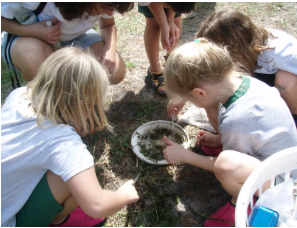In celebration of Children’s Health Month, EPA releases America’s Children and the Environment report and booklet
WASHINGTON (October 16, 2019) — Protecting children’s health by minimizing environmental impacts on children is a high priority for the U.S. Environmental Protection Agency (EPA). EPA researchers are working to stay ahead of emerging children’s environmental health challenges by providing data and information on the environment and children’s health. In collaboration with partners, EPA researchers are leading interdisciplinary, novel research that holistically considers the complex interactions that link the environment to children’s health and well-being. In celebration of Children’s Health Month, EPA is releasing the updated 2019 America’s Children and the Environment Indicators Report and a corresponding booklet that highlights a selection of the indicators that were updated in 2019 with newly available data.
“In conjunction with Children’s Health Month, EPA is releasing its first major update of America’s Children and the Environment since 2013,” said EPA Administrator Andrew Wheeler. “This booklet provides the latest data for EPA and the public on the progress we’ve made to protect our nation’s children, such as reducing the median concentration of lead in the blood of children between the ages of 1 and 5 years by 95 percent from 1976 to 2016.”
Background
The 2019 America’s Children and the Environment Indicators Report presents data on children and environmental health, bringing together information from a variety of sources to provide national children’s environmental health indicators.
Environmental contaminants can affect children differently than adults, both because children may be more highly exposed to contaminants and because they are often more vulnerable to the effects of contaminants. This report is motivated by EPA’s belief that the public should be made aware of trends in children’s environmental health.
The purpose of America’s Children and the Environment is to compile – and make available to a broad audience – information that can help identify areas that warrant additional attention, potential issues of concern, and persistent problems. EPA hopes that the development and presentation of these indicators will motivate continuing research, additional data collection and, when appropriate, necessary interventions.
To view the America’s Children and the Environment October 2019 booklet: https://www.epa.gov/americaschildrenenvironment/americas-children-and-environment-october-2019.
To view the full set of America’s Children and the Environment indicators: https://www.epa.gov/americaschildrenenvironment.
To learn more about on children’s environmental health research: https://www.epa.gov/children/childrens-environmental-health-research.
To learn more about what EPA is doing to protect children’s health: https://www.epa.gov/children.
